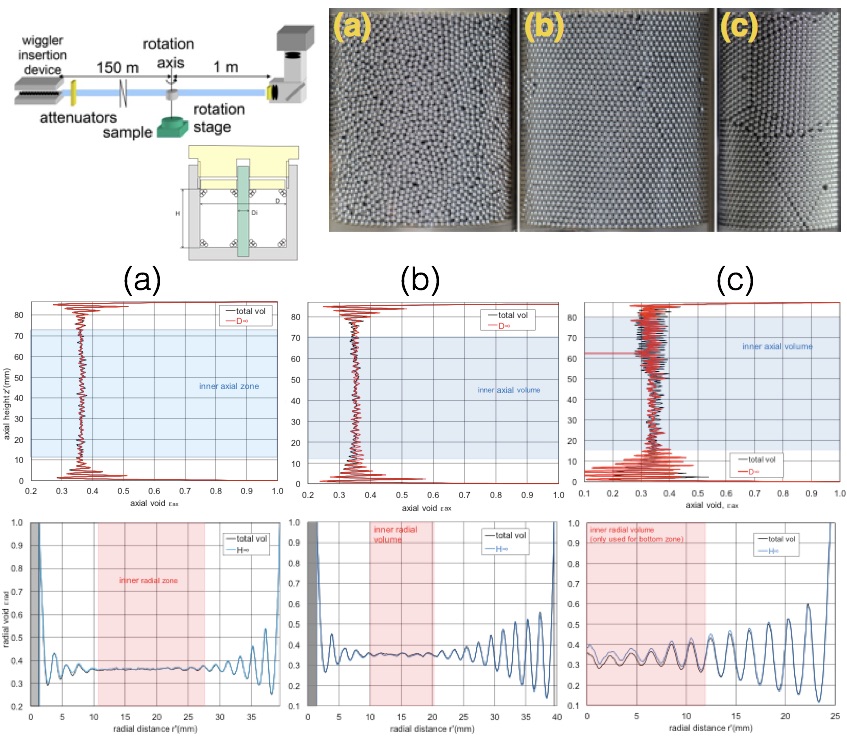Title: X-ray tomography investigations of mono-sized sphere packing structures in cylindrical containers
Author(s): Joerg Reimann, Jerome Vicente, Emmanuel Brun, Claudio Ferrero, Yixiang Gan, Alexander Rack
Powder Technology, in press. [DOI]
Abstract: The structure of mono-sized sphere packings (diameter d) in cylindrical containers (diameter D and height H) both with and without inner cylinders (diameter Di) has been investigated in detail by means of advanced X-ray computed tomography. The geometrical parameters were varied in a wide range; in all experiments 1d vertical vibration was applied. Five experiments were selected with characteristically differing local packing structures. The influence of container geometry, filling and vibration procedures on the formation of regular packings is discussed and a simple correlation is presented to assess whether structured packings occupy a significant fraction of the total packed volume.
For a packing with moderate densification, the regular structures are restricted to small wall zones and a random packing exists in the largest part of the packing volume. By selecting appropriate vibration parameters, the zones with regular structures can increase considerably and can persist in the total packed volume. The increasing crystallisation causes an increase of the container packing fraction. For cylinders with H/D > > 1 and moderate D/d, regular structures develop preferentially in radial direction from a hexagonal layer at the concave wall. For H/D < 1 and D/d > > 1, hexagonal dense structures grow preferentially above the flat bottom plate and can occupy a great portion of the total volume. The role of granular convection on these crystallisation processes has been addressed. Previous statements that the thickness of wall zones is ≈(4-5)d are not generally valid for mono-sized sphere packings; the development of a comprehensive correlation is the task of a future work.
Structural details of the packings close to concave, plane and convex walls are analysed via void fraction distributions, sphere centre positions, contact angle distributions, coordination numbers, radial distribution function and Voronoi tessellation. The combination of these methods provides a comprehensive understanding of structural details. Only a few characteristic results are presented; special topics will be the subject of forthcoming publications.
Full paper can be downloaded via Publications page.

Leave a Reply